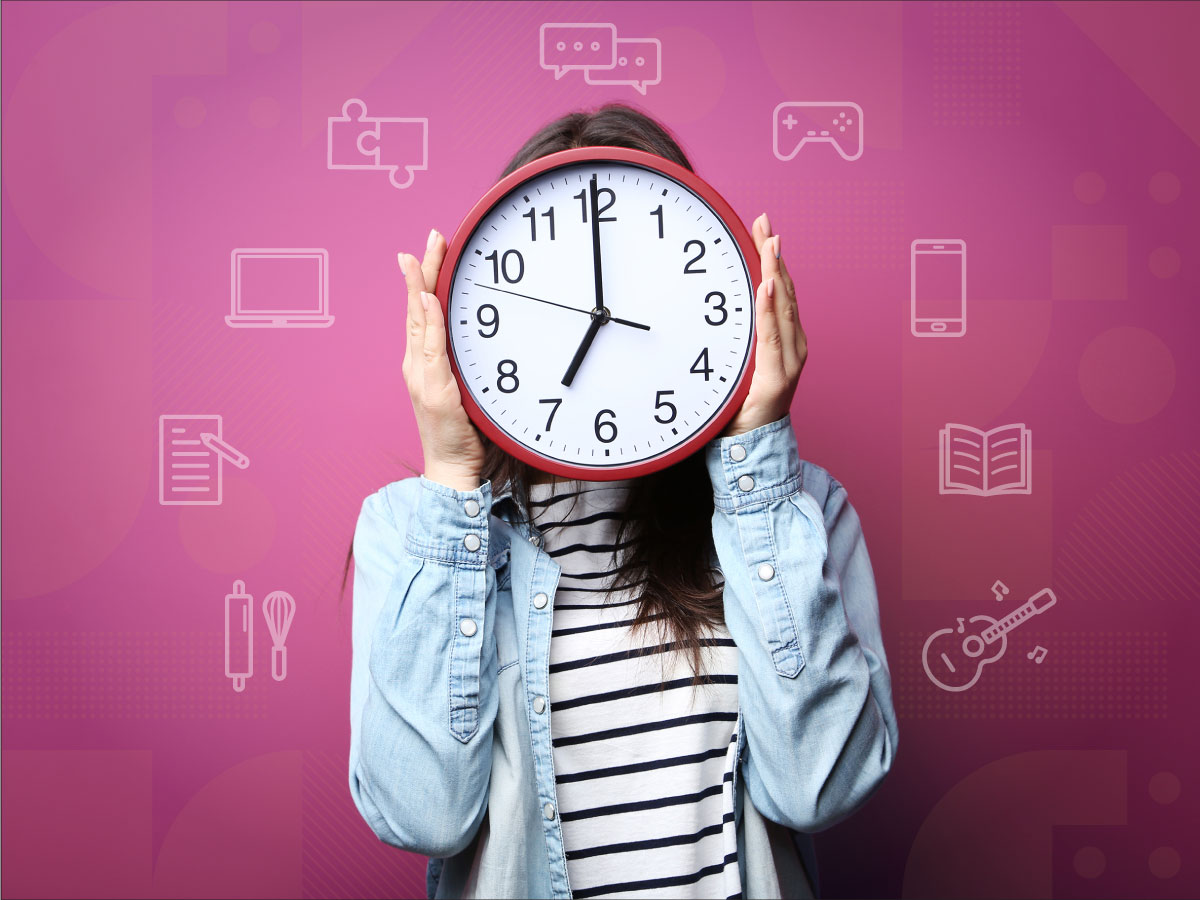

Before the outbreak of COVID-19, we were in a “time famine” where most people felt like they had more to do than they had hours in the day. Many of the most successful brands rose to meet this need by inventing products, apps, and even entire categories to give us more time, or to enhance time somehow. The gig economy blossomed by allowing consumers to outsource even the most mundane tasks, enabling us to spend our precious time elsewhere.
But now consumers are faced with a very different problem: too much time. That’s part of the reason why streaming services and gaming platforms have thrived since state and local governments issued stay-at-home orders. Rather than focus on helping consumers save time, brands need to adapt their strategies to help consumers get the most out of the time they do have – at least for the time being.
Even though it’s possible to measure and track time down to the nanosecond, our perception of time (how it feels to an individual) can fluctuate dramatically. A number of factors affect our perception of time, such as how many events you experience, your mood and feelings, the presence of music, or even the colors in your environment.
Scientists aren’t exactly sure how our brains keep track of time, but they believe there’s some sort of periodic signal that marks the passing of time, and whether or not “time flies” depends on whether we’re paying attention to that signal. Think of it this way: imagine you live near a church that tolls its bells hourly. Some days drag on and you notice every single toll of the bell, while other days fly by and you barely register the sound.
Even when we’re not paying close attention to it, the use of time has become a currency of sorts. We are constantly making decisions on how we spend our time, what’s not worth our time, and budgeting our limited supply of time. Similar to currency fluctuations that respond to market events, COVID-19’s vast disruptions to our day-to-day lives have temporarily shifted the value of our time. With fewer events to distract and entertain many of us during the current pandemic, we’re all too aware of the hours passing by each day, and many people struggle to fill the time meaningfully.
As we remain in self-quarantines, we no longer have lack of time to blame for our inability to learn a new skill or read that book that’s been sitting on our shelf. Instead, what’s become more important is using this new surplus of time meaningfully. Consumers have taken to new hobbies, clearing out baking aisles in supermarkets and landing jigsaw puzzles on long back order lists. The excess of time has created an opportunity to carefully examine what we do and don’t want in our daily lives.
To connect with consumers now, some brands may need to shift messaging or positioning to focus on satisfying new needs that have emerged. And while we don’t know the long-term implications for how we perceive and use our time, we are confident that now is an unprecedented opportunity for brands to seize on behavioral disruption.
As they sit working from home during self-quarantine, marketing and insights professionals are probably wishing they could travel through time, either to understand the new future of consumer behaviors, or to travel back in time to stop this all together – or at least shift their 2020 strategies. While we still haven’t found our crystal ball, and the DeLorean is in the shop with a busted flux capacitor, we gathered some practical advice brands can use now to respond to consumers’ shifting perceptions of time.
Many car ads feature someone driving on an open road, wind in their hair, enjoying their time behind the wheel. By focusing on the experience of driving, car manufacturers are able to differentiate products beyond functional attributes like miles per gallon and crash safety ratings. Instead, they convince car shoppers that the time they spend with their vehicle will be elevated – even if most of their time is spent in bumper-to-bumper traffic on the 405 (my friends in LA know what I mean).
By repositioning your product as an experience, consumers place value on the time spent engaging with your product that goes beyond its functional uses. For brands today, your streaming service can now be a romantic date night, your beauty products are an exercise in self-care, and pantry staples have become an opportunity to showcase your baking prowess. Each provides consumers an opportunity to increase the perceived value of time they spend with your product.
If you play in a category that’s seeing increased demand, like cooking or gaming, create opportunities for consumers to continue these behaviors when stay-at-home orders are lifted and they have less time. By understanding how consumers value the ways they are spending time now, you can develop innovative ways to merge these new behaviors to meet the demands that are sure to return in the future.
Meal kit services like Blue Apron and Sun Basket, for example, can build on the recent trend in home cooking, regardless of whether consumers use their brand now. When time again becomes a scare resource, these brands can position themselves as an opportunity for consumers to still engage in an activity they’ve grown to love, but with a lower time investment.
So while it may feel that time is both dragging along and slipping through our fingers, there are plenty of opportunities to get smart and use this disruption to better understand what’s important to consumers. But what’s most important is to begin unlocking those insights now. With most states already rolling out action plans to reopen the economy, you have no time to waste!
You must be logged in to post a comment.